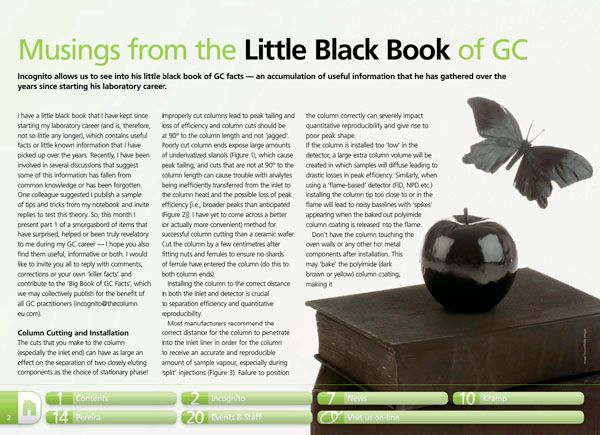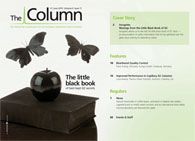Musings from the Little Black Book of GC
Incognito allows us to see into his little black book of GC facts.
I have a little black book that I have kept since starting my laboratory career (and is, therefore, not so little any longer), which contains useful facts or little known information that I have picked up over the years. Recently, I have been involved in several discussions that suggest some of this information has fallen from common knowledge or has been forgotten. One colleague suggested I publish a sample of tips and tricks from my notebook and invite replies to test this theory. So, this month I present part 1 of a smorgasbord of items that have surprised, helped or been truly revelatory to me during my GC career - I hope you also find them useful, informative or both. I would like to invite you all to reply with comments, corrections or your own ‘killer facts’ and contribute to the ‘Big Book of GC Facts’, which we may collectively publish for the benefit of all GC practitioners ([email protected]).
New Study Reviews Chromatography Methods for Flavonoid Analysis
April 21st 2025Flavonoids are widely used metabolites that carry out various functions in different industries, such as food and cosmetics. Detecting, separating, and quantifying them in fruit species can be a complicated process.
University of Rouen-Normandy Scientists Explore Eco-Friendly Sampling Approach for GC-HRMS
April 17th 2025Root exudates—substances secreted by living plant roots—are challenging to sample, as they are typically extracted using artificial devices and can vary widely in both quantity and composition across plant species.
Sorbonne Researchers Develop Miniaturized GC Detector for VOC Analysis
April 16th 2025A team of scientists from the Paris university developed and optimized MAVERIC, a miniaturized and autonomous gas chromatography (GC) system coupled to a nano-gravimetric detector (NGD) based on a NEMS (nano-electromechanical-system) resonator.

.png&w=3840&q=75)

.png&w=3840&q=75)



.png&w=3840&q=75)



.png&w=3840&q=75)












